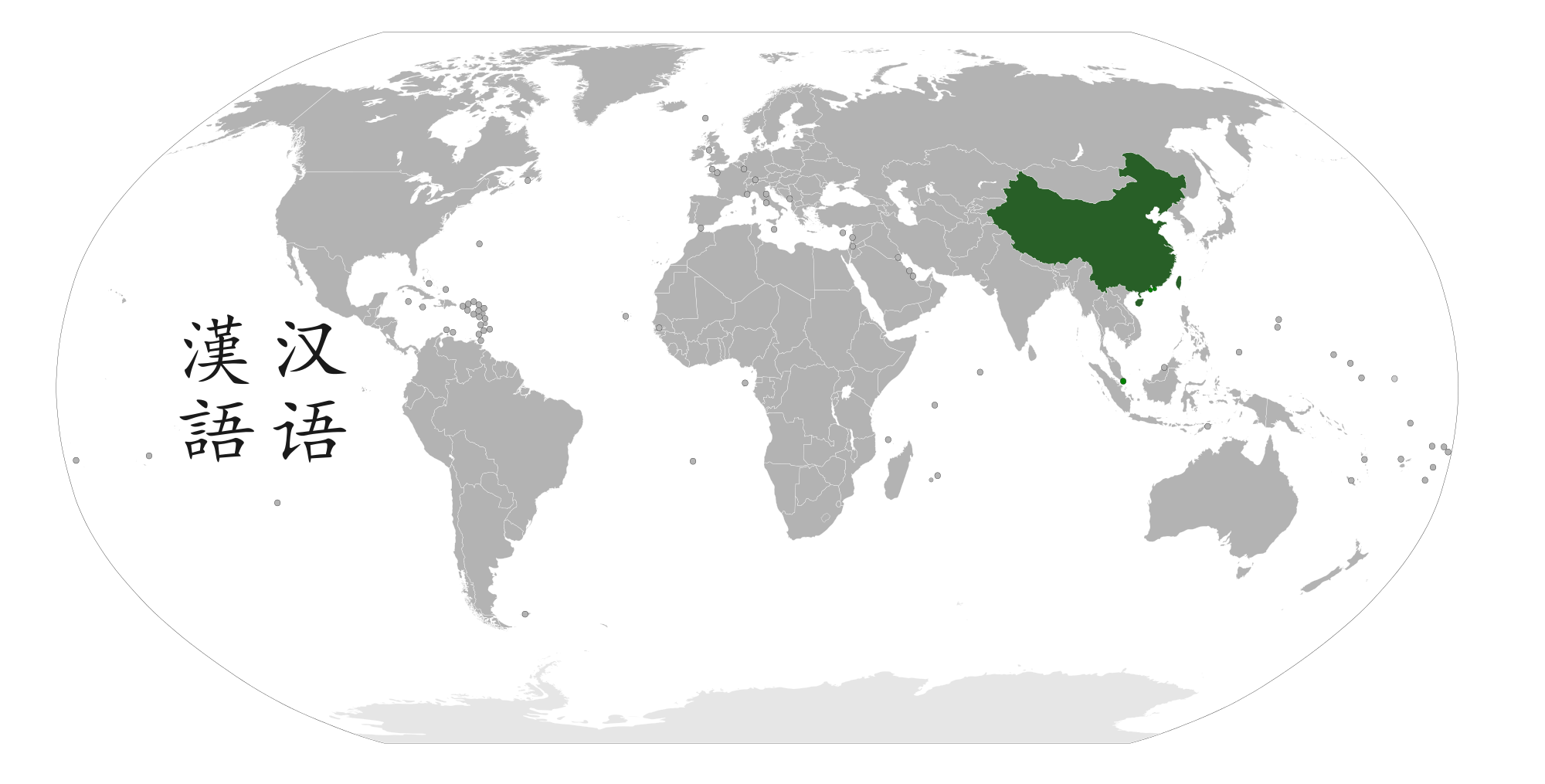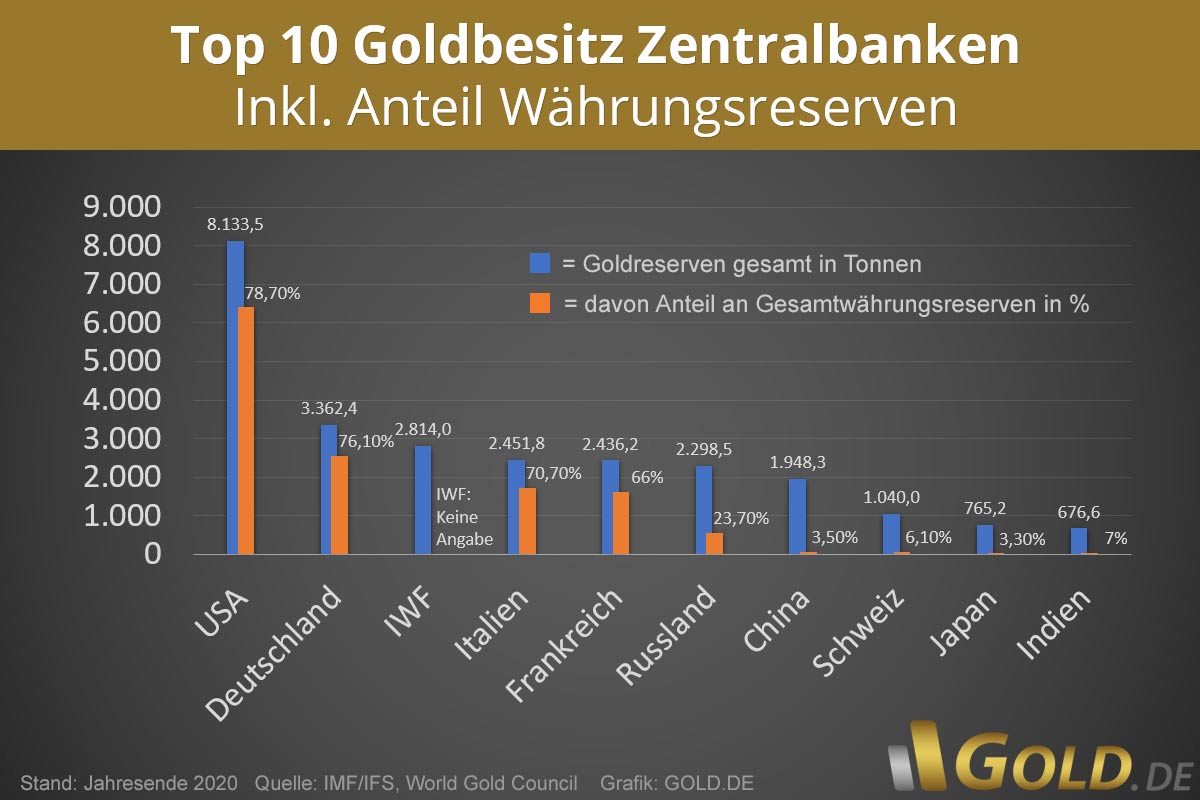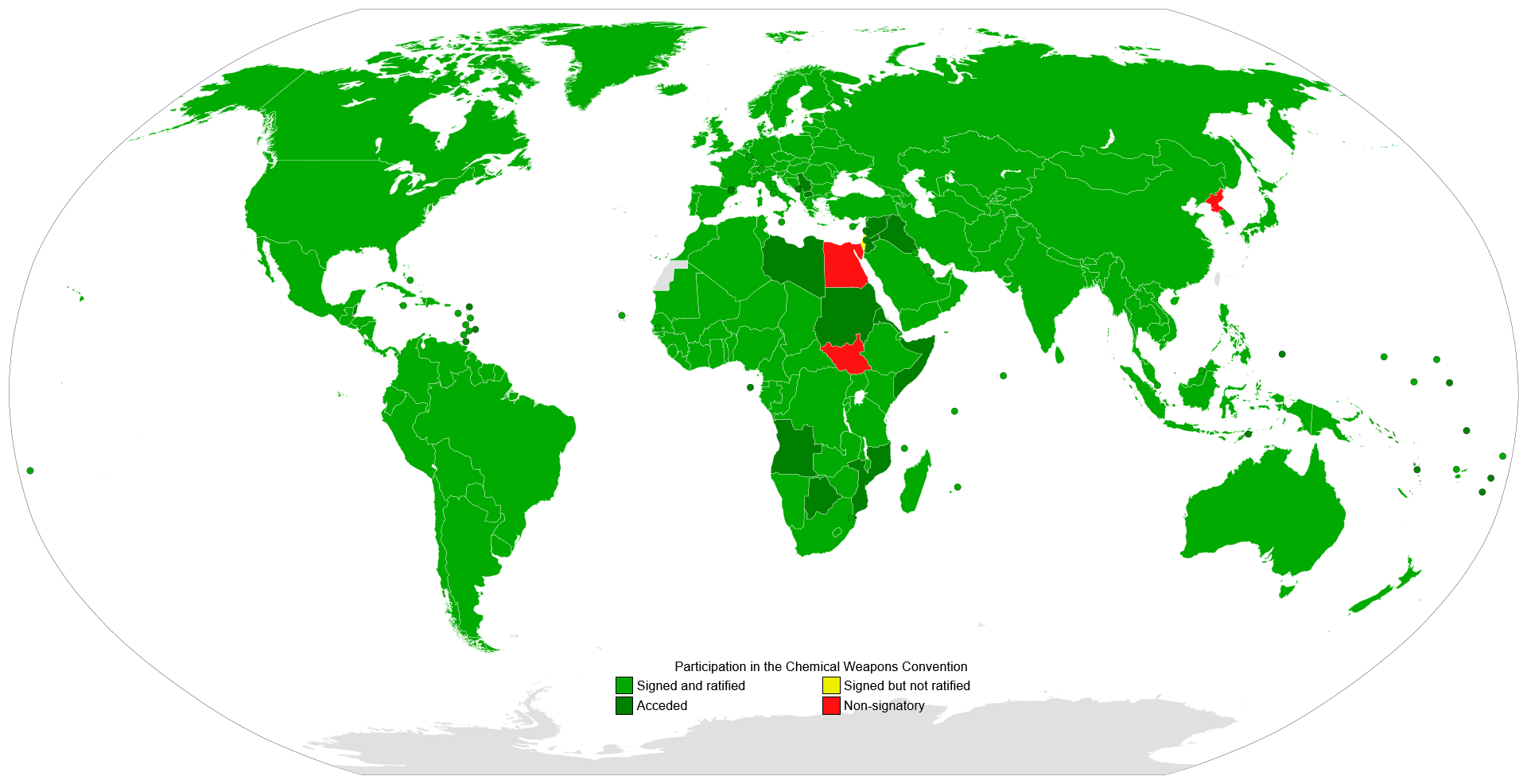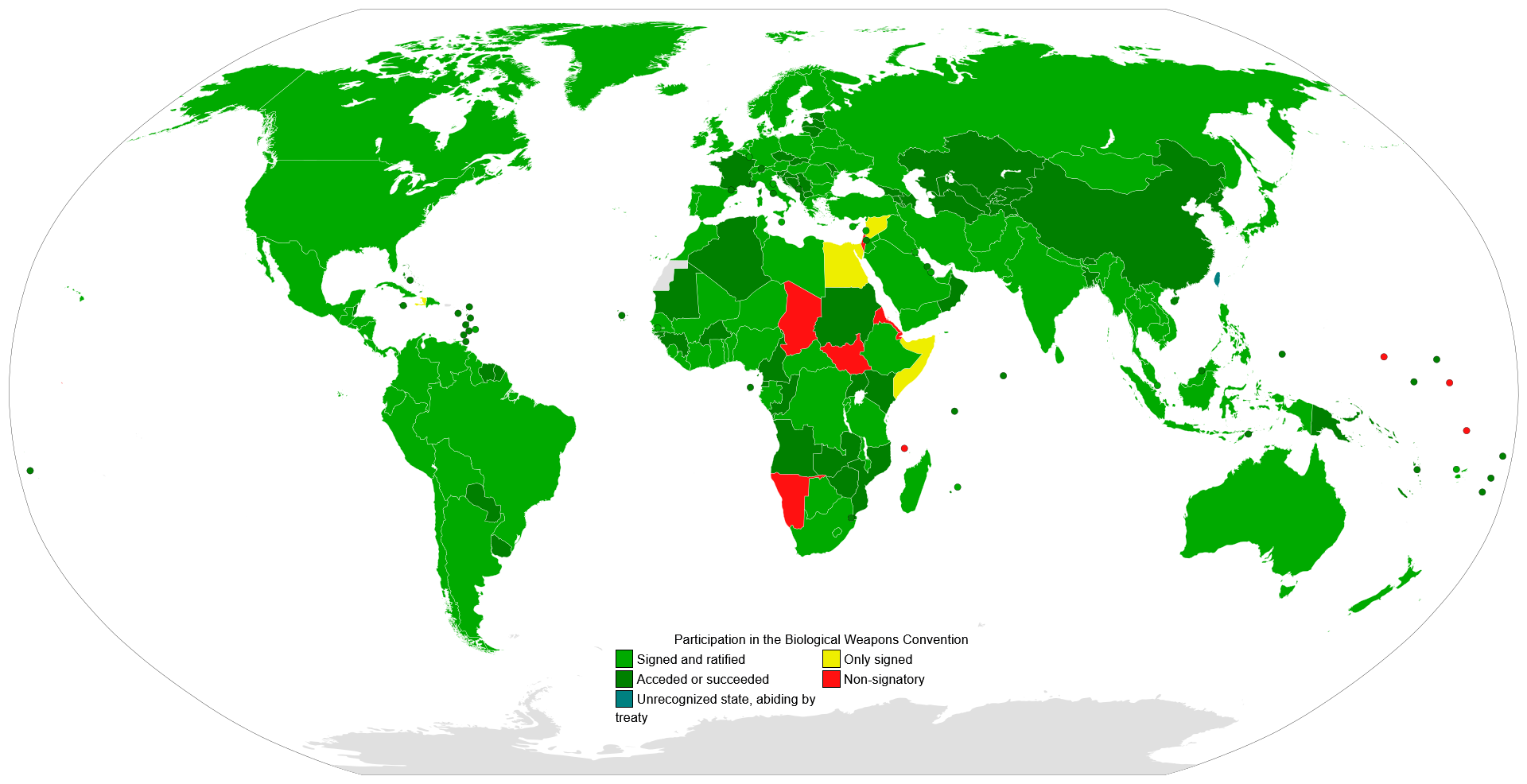
漢德百科全書 | 汉德百科全书


 Energy resource
Energy resource
 Gold reserve
Gold reserve

 Financial
Financial

 Financial
Financial
 *Brazil economic data
*Brazil economic data

 Financial
Financial
 *China economic data
*China economic data

 Financial
Financial
 *Germany economic data
*Germany economic data

 Financial
Financial
 *European Union economic data
*European Union economic data

 Financial
Financial
 *France economic data
*France economic data

 Financial
Financial
 *India economic data
*India economic data

 Financial
Financial
 *Indonesia economic data
*Indonesia economic data

 Financial
Financial
 *Italy economic data
*Italy economic data

 Financial
Financial
 *Japan economic data
*Japan economic data

 Financial
Financial
 *Canada economic data
*Canada economic data

 Financial
Financial
 *Russia economic data
*Russia economic data

 Financial
Financial
 *United States economic data
*United States economic data

 Financial
Financial
 *United Kingdom economic data
*United Kingdom economic data

 Economy and trade
Economy and trade



 Energy resource
Energy resource

 Energy resource
Energy resource
 *Nuclear power
*Nuclear power

 Energy resource
Energy resource
 *Electrical power
*Electrical power

 Energy resource
Energy resource
 Nuclear power plants
Nuclear power plants
 Canada
Canada


 Energy resource
Energy resource

 Energy resource
Energy resource
 *****Largest electricity producers in Europe
*****Largest electricity producers in Europe

 Geography
Geography

 Geography
Geography
 *World overview
*World overview

 Economy and trade
Economy and trade



 Energy resource
Energy resource

 Energy resource
Energy resource
 ***Winter heating equipment and simple methods
***Winter heating equipment and simple methods

 Energy resource
Energy resource
 ***Summer cooling equipment and simple methods
***Summer cooling equipment and simple methods

 Geography
Geography

 Geography
Geography
 *World overview
*World overview





 Education and Research
Education and Research

 Botany
Botany

 Geography
Geography
 *World overview
*World overview

 History
History
 J 0 - 500 AD
J 0 - 500 AD

 History
History
 K 500 - 1000 AD
K 500 - 1000 AD

 History
History
 L 1000 - 1500 AD
L 1000 - 1500 AD

 History
History
 M 1500 - 2000 AD
M 1500 - 2000 AD

 Law
Law

 Hand in Hand
Hand in Hand

 Hand in Hand
Hand in Hand
 Institute of Culture and Language
Institute of Culture and Language

 Art
Art

 Literature
Literature

 Medical, Pharmaceutical, Rehabilitation
Medical, Pharmaceutical, Rehabilitation

 Science and technology
Science and technology

Die lateinische Sprache (lateinisch lingua Latina), kurz Latein, ist eine indogermanische Sprache, die ursprünglich von den Latinern, den Bewohnern von Latium mit Rom als Zentrum, gesprochen wurde. Die frühesten Zeugnisse reichen bis ins 5. oder 6. vorchristliche Jahrhundert zurück (Frühlatein), ab dem 3. vorchristlichen Jahrhundert liegen längere Texte vor (Altlatein), ihre volle Ausformung in der Gestalt des heute vor allem bekannten und gelehrten klassischen Lateins erreichte die (Schrift-)Sprache im ersten vorchristlichen Jahrhundert.
Latein war Amtssprache des Römischen Reichs und wurde so zur dominierenden Verkehrssprache im westlichen Mittelmeerraum. Während sich aus der gesprochenen Umgangssprache, dem sogenannten Vulgärlatein, die romanischen Sprachen entwickelten, blieb das Latein der römischen Schriftsteller auch als tote Sprache bis in die Neuzeit die führende Sprache der Literatur, Wissenschaft, Politik und Kirche. Gelehrte wie Thomas von Aquin, Petrarca, Erasmus, Luther, Kopernikus, Descartes oder Newton haben Werke auf Latein verfasst. Bis ins 19. Jahrhundert wurden die Vorlesungen an den Universitäten in ganz Europa auf Latein gehalten. In Polen, Ungarn und im Heiligen Römischen Reich war Latein bis dahin Amtssprache. In Tausenden von Lehn- und Fremdwörtern sowie Redewendungen ist Latein heute auch in nichtromanischen Sprachen wie Deutsch oder Englisch präsent. Bei der Bildung neuer Fachbegriffe wird immer wieder auf Latein zurückgegriffen.
Wegen seiner enormen Bedeutung für die sprachliche und kulturelle Entwicklung Europas wird Latein vor allem in Deutschland,[1] Österreich und der Schweiz an vielen Schulen und Universitäten gelehrt. Für manche Studiengänge sind Lateinkenntnisse oder das Latinum erforderlich. Ähnlich stellt sich die Situation im Vereinigten Königreich dar, wo Latein bereits in der Primarstufe unterrichtet wird.
拉丁语(拉丁语:Lingua Latīna),属于印欧语系意大利语族。是最早在拉提姆地区(今意大利的拉齐奥区)和罗马帝国使用。虽然现在拉丁语通常被认为是一种死语言,但仍有少数基督宗教神职人员及学者可以流利使用拉丁语。罗马天主教传统上用拉丁语作为正式会议的语言和礼拜仪式用的语言。此外,许多西方国家的大学仍然提供有关拉丁语的课程。
在英语和其他西方语言创造新词的过程中,拉丁语一直得以使用。拉丁语及其后代罗曼斯诸语是意大利语族(Italic Languages)中仅存的一支。通过对早期意大利遗留文献的研究,可以证实其他意大利语族分支的存在,之后这些分支在罗马共和国时期逐步被拉丁语同化。拉丁语的亲属语言包括法利斯克语、奥斯坎语和翁布里亚语。但是,威尼托语可能是一个例外。在罗马时代,作为威尼斯居民的语言,威尼托语得以和拉丁语并列使用。
拉丁语是一种高度屈折的语言。它有三种不同的性,名词有七格,动词有四种词性变化、六种时态、六种人称、三种语气、三种语态、两种体、两个数。七格当中有一格是方位格,通常只和方位名词一起使用。呼格与主格基本一致,因此拉丁语一般只有五个不同的格。不同的作者在行文中可能使用五到七种格。形容词与副词类似,按照格、性、数曲折变化。虽然拉丁语中有指示代词指代远近,它却没有冠词。后来拉丁语通过不同的方式简化词尾的曲折变化,形成了罗曼语族。
拉丁语在一定程度上缺乏希腊语的多样性和灵活性,这可能反映了罗马人讲求实际的民族性格。比起文学创作的多样和灵活,罗马人更关心政府和帝国的发展与扩张,对推测和诗意的想象不感兴趣。但是,即便在这种情况下,在众多古典时期大师们的笔下,拉丁语依然是堪与世界上其他任何内涵丰富语言媲美的文学、诗歌的语言。
拉丁语与希腊语同为影响欧美学术与宗教最深的语言。在中世纪,拉丁语是当时欧洲不同国家交流的媒介语,也是研究科学、哲学和神学所必须的语言。直到近代,通晓拉丁语曾是研究任何人文学科教育的前提条件;直到20世纪,拉丁语的研究才逐渐衰落下去,重点转移到对当今语言的研究。
ラテン語(ラテンご、ラテン語: lingua latina リングア・ラティーナ)は、インド・ヨーロッパ語族のイタリック語派の言語の一つ。ラテン・ファリスク語群。漢字表記は拉丁語・羅甸語で、拉語・羅語と略される。 元々は古代ローマ共和国の公用語として広く普及した古代言語である。西ローマ帝国滅亡後もラテン語はローマ文化圏の古典文学を伝承する重要な役割を果たした。勢力を伸ばすキリスト教会を通してカトリック教会の公用語としてヨーロッパ各地へ広まり、祭祀宗教用語として使用されるようになると、中世には、中世ラテン語として成長した。ルネサンスを迎えると、自然科学・人文科学・哲学のための知識階級の言語となった。さらに、読書き主体の文献言語や学術用語として近世のヨーロッパまで発展・存続した。現在もラテン語はバチカンの公用語であるものの、日常ではほとんど使われなくなったといえる。しかし、各種学会・医学・自然科学・数学・哲学・工業技術など各専門知識分野では、世界共通の学名としてラテン語名を付けて公表する伝統があり、新発見をラテン語の学術論文として発表するなど、根強く用いられ続けている[2]。また、略号として午前午後のa.m.(ante meridiem)p.m.(post meridiem)や、ウイルス(virus)やデータ(data)など、日常的に用いられる語のなかにも語源がラテン語に由来するものがある。
Latin (Latin: lingua latīna, IPA: [ˈlɪŋɡʷa laˈtiːna]) is a classical language belonging to the Italic branch of the Indo-European languages. The Latin alphabet is derived from the Etruscan and Greek alphabets, and ultimately from the Phoenician alphabet.
Latin was originally spoken in the area around Rome, known as Latium.[4] Through the power of the Roman Republic, it became the dominant language, initially in Italy and subsequently throughout the western Roman Empire. Vulgar Latin developed into the Romance languages, such as Italian, Portuguese, Spanish, French, and Romanian. Latin, Greek, and French have contributed many words to the English language. In particular, Latin and Ancient Greek roots are used in English descriptions of theology, biology, science, medicine, and law.
By the late Roman Republic (75 BC), Old Latin had been standardised into Classical Latin. Vulgar Latin was the colloquial form spoken during the same time and attested in inscriptions and the works of comic playwrights like Plautus and Terence.[5] Late Latin is the written language from the 3rd century, and Medieval Latin the language used from the 9th century to the Renaissance which used Renaissance Latin. Later, Early Modern Latin and New Latin evolved. Latin was used as the language of international communication, scholarship, and science until well into the 18th century, when it began to be supplanted by vernaculars. Ecclesiastical Latin remains the official language of the Holy See and the Roman Rite of the Catholic Church.
Latin is taught in primary, secondary, and postsecondary educational institutions around the world.[6][7]
Latin is a highly inflected language, with three distinct genders, up to seven noun cases, five declensions, four verb conjugations, three tenses, three persons, three moods, two voices, two or three aspects and two numbers.
Le latin (en latin : lingua Latīna ou Latīna lingua) est une langue italique de la famille des langues indo-européennes, parlée à l'origine par les Latins dans le Latium de la Rome antique. Bien qu'il soit souvent considéré comme une langue mortenote 1, sa connaissance, voire son usage, se sont maintenus à l'université et dans le clergé. De nombreuses écoles et universités continuent à l'enseigner1,note 2. Le latin est toujours utilisé pour la production de néologismes dans de nombreuses familles de langues. Le latin ainsi que les langues romanes (dites parfois néo-latines), sont la seule branche des langues italiques à avoir survécu. Les autres branches sont attestées dans des documents datant de l'Italie préromaine, mais ont été assimilées durant la période républicaine ou au début de l'époque impériale.
Langue flexionnelle, elle comporte sept cas, deux nombres et trois genres. L'alphabet latin est dérivé des alphabets étrusque et grec. Enrichi de lettres supplémentaires et de signes diacritiques, il est utilisé aujourd'hui par de nombreuses langues vivantes et comportait à l'époque classique 23 lettres, dont 5 voyelles (a, e, i, o, u), 2 semi-voyelles et 17 consonnes.
Il latino è una lingua indoeuropea appartenente al gruppo delle lingue latino-falische.[1] Veniva parlata nel Lazio (Lătĭŭm in latino) almeno dagli inizi del I millennio a.C.
Il latino acquistò grande importanza con l'espansione dello stato romano e in quanto lingua ufficiale dell'impero si radicò in gran parte dell'Europa e dell'Africa settentrionale. Tutte le lingue romanze discendono dal latino volgare, ma parole di origine latina si trovano spesso anche in molte lingue moderne di altri ceppi: questo perché anche dopo la caduta dell'Impero romano d'Occidente, per più di un millennio il latino fu, nel mondo occidentale, la lingua della cultura.
Quando venne meno questa sua funzione, intorno al XVII ed al XVIII secolo, essa fu assunta dalle lingue vive europee del tempo e, in alcuni ambiti letterari (memorialistica in particolare) e nella diplomazia, dal francese. Quest'ultima, essendo una lingua romanza, continuò a promuovere parole di origine latina negli altri idiomi fino ai primi decenni del Novecento, allorquando si andò gradualmente imponendo in Europa e nel mondo, come lingua franca, l'inglese, che pur essendo di ceppo germanico presenta, soprattutto nel lessico, un gran numero di termini di origine latina, grazie alla diffusione dei termini dotti trasmessi dai monaci predicatori cristiani e più tardi alla conquista dell'Inghilterra da parte dei Normanni francesizzati.
Nel frattempo, in seguito alla conoscenza dell'America dopo il 1492 e alla politica coloniale degli stati europei, alcune lingue romanze (spagnolo, francese, portoghese e italiano) unitamente ad altri idiomi dell'Europa occidentale, in cui l'impronta latina era forte, fra cui l'inglese, si erano poi diffuse in gran parte del mondo.
La lingua latina si è sviluppata grazie anche al contributo di tutte le lingue dei popoli con cui è entrata in contatto durante l'epoca romana, ed in particolare con gli idiomi italici, l'idioma etrusco e con quelli parlati nel Mediterraneo orientale (soprattutto il greco).
Attualmente le lingue con maggiore somiglianza al latino sono il sardo per la pronuncia, l'italiano per il lessico, il romeno per la struttura grammaticale (sono presenti declinazioni).
Il latino ecclesiastico è lingua coufficiale nella Santa Sede; la Chiesa cattolica ha usato il latino come principale lingua liturgica fino al Concilio Vaticano II.
In Italia è insegnato nei licei classici, nei licei scientifici, nei licei delle scienze umane e nei licei linguistici, benché il suo studio sia stato ridimensionato considerevolmente dalla Riforma Gelmini dal 2011.
Il latino è usato per designare i nomi nelle classificazioni scientifiche degli esseri viventi. In Europa orientale i nomi delle medicine sono dati anche in latino, così come nel campo dell'omeopatia.
El latín es una lengua de la rama itálica3 de la familia lingüística del indoeuropeo4 que fue hablada en la Antigua Roma y, posteriormente durante la Edad Media y la Edad Moderna, y llegó a la Edad Contemporánea, pues se mantuvo como lengua científica hasta el siglo XIX. Su nombre deriva de una zona geográfica de la península itálica donde se desarrolló Roma, el Lacio (en latín, Latium).
Adquirió gran importancia con la expansión de Roma,5 y fue lengua oficial del imperio en gran parte de Europa y África septentrional, junto con el griego. Como las demás lenguas indoeuropeas en general, el latín era una lengua flexiva de tipo fusional con un mayor grado de síntesis nominal que las actuales lenguas romances, en la cual dominaba la flexión mediante sufijos, combinada en determinadas veces con el uso de las preposiciones, mientras que en las lenguas modernas derivadas dominan las construcciones analíticas con preposiciones, mientras que se ha reducido la flexión nominal a marcar solo el género y el número, conservando los casos de declinación solo en los pronombres personales (estos tienen, además, un orden fijo en los sintagmas verbales).b
El latín originó un gran número de lenguas europeas, denominadas lenguas romances, como el portugués, el gallego, el español, el asturleonés, el aragonés, el catalán, el occitano, el francés, el valón, el retorrománico, el italiano, el rumano y el dálmata. También ha influido en las palabras de las lenguas modernas debido a que durante muchos siglos, después de la caída del Imperio romano, continuó usándose en toda Europa como lingua franca para las ciencias y la política, sin ser seriamente amenazada en esa función por otras lenguas en auge (como el castellano en el siglo XVII o el francés en el siglo XVIII), hasta prácticamente el siglo XIX.
La Iglesia católica lo usa como lengua litúrgica oficial (sea en el rito romano sea en los otros ritos latinos), aunque desde el Concilio Vaticano II se permiten además las lenguas vernáculas.6 También se usa para los nombres binarios de la clasificación científica de los reinos animal y vegetal, para denominar figuras o instituciones del mundo del Derecho, como lengua de redacción del Corpus Inscriptionum Latinarum, y en artículos de revistas científicas publicadas total o parcialmente en esta lengua.
El estudio del latín, junto con el del griego clásico, es parte de los llamados estudios clásicos, y aproximadamente hasta los años 1960 fue estudio casi imprescindible en las humanidades. El alfabeto latino, derivado del alfabeto griego, es ampliamente el alfabeto más usado del mundo con diversas variantes de una lengua a otra.
Лати́нский язык (самоназвание — lingua latina), или латы́нь, — язык латино-фалискской ветви италийских языков индоевропейской языковой семьи. На сегодняшний день это единственный активный, хотя и ограниченно употребляемый (не разговорный) италийский язык.
Латинский язык является одним из наиболее древних письменных индоевропейских языков.
В наши дни латинский язык является официальным языком Святого Престола, Мальтийского ордена и города-государства Ватикан, а также, отчасти, Римско-католической церкви.
Большое количество слов в европейских (и не только) языках имеет латинское происхождение (см. также Международная лексика).

Die romanischen Sprachen gehören zum (modernen) italischen Zweig der indogermanischen Sprachen. Die Gruppe der romanischen Sprachen bietet insofern eine Besonderheit, als es sich um eine Sprachfamilie handelt, deren gemeinsame Vorläufersprache das Latein (bzw. das Vulgärlatein) war, das in seiner Geschichte und schriftlichen Überlieferungen belegbar ist.[1] Es gibt etwa 15 romanische Sprachen mit rund 700 Mio. Muttersprachlern, 850 Mio. inklusive Zweitsprechern. Die sprecherreichsten romanischen Sprachen sind Spanisch, Portugiesisch, Französisch, Italienisch und Rumänisch.[2]
| Sprache | Muttersprachler | Verbreitung |
|---|---|---|
| Spanisch (castellano, español) | 388.000.000 | Spanien, Nord-, Mittel- und Südamerika (außer Brasilien, Guyana, Surinam, Französisch-Guayana, Belize), Äquatorialguinea, Westsahara und Teile der Vereinigten Staaten und der Philippinen. |
| Portugiesisch (português) | 216.000.000 | Portugal, Brasilien, Angola, Äquatorialguinea, Mosambik, Osttimor, Kap Verde, Guinea-Bissau, São Tomé und Príncipe, Macau |
| Französisch (français) | 110.000.000 | Frankreich, Belgien (Wallonien), westliche Kantone (Romandie) der Schweiz, Antillen, Kanada (vor allem Québec, Teile von Ontario und New Brunswick), Vereinigte Staaten von Amerika im Bundesstaat Louisiana, in ehemaligen französischen und belgischen Kolonien Afrikas (vor allem Elfenbeinküste und DR Kongo) |
| Italienisch (italiano) | 65.000.000 | Italien, Schweiz (Tessin und südliches Graubünden), San Marino, Vatikanstadt, Kroatien (Gespanschaft Istrien), Slowenien (Koper, Piran, Izola) |
| Rumänisch (română) | 28.000.000 | Rumänien, Moldawien, Serbien (Vojvodina und Timočka Krajina) und andere Länder in Osteuropa und Westasien (unter anderem Ukraine und Israel)[8] |
| Katalanisch (català) | 8.200.000 | Katalonien einschließlich des Roussillon (Südfrankreich), Andorra, Balearen, Valencia, Franja de Aragón und auf Sardinien in der Stadt L’Alguer/Alghero |
| Venetisch (vèneto) | 5.000.000 | Venetien (Italien), Friaul-Julisch Venetien, Trentino, Istrien und in Rio Grande do Sul (Brasilien) |
| Galicisch (galego) | 3.000.000 | Galicien (Spanien) |
| Okzitanisch (occitan) | 2.800.000 | südliches Drittel Frankreichs, Randgebiete Italiens (piemontesische Alpen) und Spaniens (Val d’Aran in Katalonien) |
| Sardisch (sardu) | 1.200.000 | Sardinien (Italien) |
| Furlanisch (furlan) | 350.000 | Friaul (Italien) |
| Asturisch (asturianu) | 100.000 | Asturien (Spanien) |
| Bündnerromanisch (Rätoromanisch; rumantsch/romontsch) | 60.000 | Schweizer Kanton Graubünden |
| Ladinisch (ladin) | 40.000 | Italien (Südtirol, Trentino, Venetien) |
| Aragonesisch (aragonés) | 12.000 | Aragonien (Spanien) Status als Standard umstritten |
罗马语族(又称罗曼语族、拉丁语族),属于印欧语系,是从意大利语族衍生出来的现代语族,主要包括从拉丁语演化而来的现代诸语言。操罗马语族语言的人主要包括传统意义上的“欧洲拉丁人”。罗马帝国瓦解之后,原本统一的拉丁语也随地域的不同而产生各类方言。这些方言就是今日罗马诸语言的雏形。
尽管如此,现代罗马语族诸语言和古老的拉丁文之间已经存在很大不同了。比如,现代罗马语多以冠词和介词来替代拉丁文词尾复杂的格变化;现代罗马语用助动词来构成复合时态,这也是拉丁文不具备的。
尽管都是从拉丁语演化而来的,罗马诸语言之间仍存在比较显著的差别。造成这些差别的原因包括:历史传统的彼此隔绝、古罗马帝国治前的地域性古语的影响、罗马帝国覆灭后频繁的战争和社会变迁,以及文艺复兴时期各种地域文化之间的冲突和共融,等等。
ロマンス諸語(ロマンスしょご)は、インド・ヨーロッパ語族イタリック語派ラテン・ファリスク語群に属する言語のうち、ラテン語の口語である俗ラテン語に起源をもつ言語の総称である。ロマン諸語、ロマンス語、ロマン語とも言う。
また、ラテン・ファリスキ語群のことをロマンス語群、イタリック語派のことをロマンス語派と言うこともある。
方言連続体についての論議の際、しばしばロマンス系諸語の近似性について言及される。これは近代言語学の父・フェルディナン・ド・ソシュールが一般言語学講義の中でフランス語とイタリア語は一つの方言連続体であり、「明確な境界線を引くことは難しい」と記している事からも窺える。ロマンス諸語は個々の言語である前にラテン語の方言であるともいえる。
The Romance languages (also called Romanic languages or Neo-Latin languages) are the modern languages that evolved from Vulgar Latin between the third and eighth centuries[2] and that form a subgroup of the Italic languages within the Indo-European language family.
Today, around 800 million people are native speakers worldwide, mainly in Europe, Africa, and the Americas, but also elsewhere. Additionally, the major Romance languages have many non-native speakers and are in widespread use as lingua francas.[3] This is especially the case for French, which is in widespread use throughout Central and West Africa, Madagascar, Mauritius, and the Maghreb.
The five most widely spoken Romance languages by number of native speakers are Spanish (470 million), Portuguese (250 million), French (150 million), Italian (90 million),[4] and Romanian (25 million).[5]
Because of the difficulty of imposing boundaries on a continuum, various counts of the modern Romance languages are given; for example, Dalby lists 23 based on mutual intelligibility.[6] The following, more extensive list[citation needed], includes 35 current, living languages, and one recently extinct language, Dalmatian:
- Ibero-Romance: Portuguese, Galician, Mirandese, Asturian, Leonese, Spanish (Castilian), Aragonese, Ladino (Judaeo-Spanish);
- Occitano-Romance: Catalan/Valencian, Occitan (langue d'oc), Gascon;
- Gallo-Romance: French/Oïl languages, Franco-Provençal (Arpitan);
- Rhaeto-Romance: Romansh, Ladin, Friulian;
- Gallo-Italic: Piedmontese, Ligurian, Lombard, Emilian-Romagnol;
- Italo-Dalmatian: Italian, Tuscan and Corsican, Sassarese, Sicilian, Neapolitan, Dalmatian (extinct in 1898), Venetian, Istriot;
- Sardinian;
- Eastern Romance: Daco-Romanian, Istro-Romanian, Aromanian, Megleno-Romanian.
On nomme langues romanes1 les langues issues du latin vulgaire, c'est-à-dire la forme de latin vernaculaire utilisée pour la communication de tous les jours.
Ces langues ont été parlées ou le sont encore dans un ensemble géographique désigné par le terme de Romania2, désignant le Nord-Ouest européen de l'ancien Empire romain d'Occident et l'Empire Romain d'Orient, où les Valaques parlaient une forme de latin vulgaire (mais où la langue grecque est rapidement devenue officielle en Europe et en Anatolie, tandis que la Syrie, la Palestine et l'Égypte sont passées à l'arabe après la conquête musulmane). Les mots roman(e) et Romania remontent à des dérivés de l'adjectif latin romanus : l'on considérait en effet que leurs locuteurs utilisaient une langue issue de celle des Romains, par opposition à d'autres introduites ultérieurement dans les territoires de l'Empire, comme le francique au nord de la France, langue des Francs appartenant à la branche des langues germaniques. La première attestation du terme roman remonte au concile de Tours (813). C'est lors de ce concile – l'un des cinq réunis cette même année à l'initiative de Charlemagne – qu'une distinction fut faite entre une langue de type roman et une langue germanique (qualifiée de tudesque). Il s'agissait d'une forme évoluée de l'une des langues gallo-romanes, ancêtre des langues actuelles parlées sur le territoire français et nommée rustica romana lingua, ou encore roman. Ce texte, encore largement latinisé, est, dans l'état actuel des connaissances, la première source écrite romane attestée.
Le premier ouvrage mentionnant plusieurs langues romanes est le De Vulgari Eloquentia (« De l'éloquence vulgaire ») de Dante (XIIIe siècle), où l'on trouve les dénominations de langue d'oïl, langue d'oc et de langue de si. Il s'agit pour Dante de proposer, pour remplacer le latin comme langue littéraire, l'une de ces trois langues, la langue d'oïl des chansons de geste, la langue d'oc des troubadours, ou un parler local, le toscan florentin, qui sera finalement à l'origine de l'italien littéraire4.
On date à peu près l'évolution du latin vulgaire vers les langues romanes de la manière suivante5 :
- Entre −200 et 400 environ : différentes formes de latin vulgaire.
- Entre 500 et 600 : ces formes commencent à se différencier plus ou moins nettement.
- En 813, au concile de Tours, l'existence d'une langue romane est reconnue, puisque le concile demande que désormais les sermons soient prononcés en « rusticam Romanam linguam » (langue romane rurale) et non plus en latin afin d'être compris par tous.
- Après 842 : premier texte complet rédigé dans une langue romane (sans doute les prémices de la langue d'oïl), les Serments de Strasbourg.
Les langues romanes partagent un ensemble de traits communs donnant une bonne cohérence à cette famille de langues, parmi lesquels les plus importants sont :
- un lexique principalement issu du latin vulgaire ;
- une réorganisation du système vocalique latin (par diphtongaison, apophonie et syncope principalement)[réf. nécessaire] ;
- des phénomènes importants de palatalisation des consonnes ;
- la disparition quasi complète du neutre, à l'exception du roumain ;
- une réorganisation importante du système verbal, par le développement, notamment, de verbes auxiliaires, la suppression du futur latin, la création d'un futur périphrastique formé à partir du verbe avoir (chanter-as → chanteras), celle d'un conditionnel ;
- le développement des articles, inconnus du latin.
- Les langues romanes sont habituellement séparées selon la ligne La Spezia–Rimini en
- langues romanes occidentales : les langues gallo-romanes, les langues ibéro-romanes, les langues occitano-romanes et les langues rhéto-romanes ;
- langues romanes orientales : les langues italo-romanes, le sarde, les langues thraco-romanes et le dalmate.
Le lingue romanze, lingue latine o lingue neolatine[2] sono le lingue derivate dal latino. Esse sono l'evoluzione diretta non già del latino classico, bensì di quello volgare ossia "popolare" (dal latino vulgus 'popolo'), costituito dalle varietà linguistiche sviluppatesi a seguito dell'espansione dell'Impero romano.
Più di un miliardo di persone ha come lingua madre una lingua romanza; un miliardo e mezzo di individui (oltre un sesto dell'umanità) ne parlano una almeno come seconda o altra lingua. L'area in cui queste lingue si sono sviluppate, e sono ancora parlate nelle loro versioni contemporanee, viene chiamata Romània e corrisponde alla parte europea occidentale dell'impero romano, esclusa la Britannia, con l'aggiunta di altre isole linguistiche neolatine minori diffuse nei Balcani (lingue romanze orientali). Nel Nordafrica l'invasione araba (VIII secolo) ha cancellato ogni volgare latino che vi si era sviluppato, mentre la persistenza dell'impero nella sua porzione orientale, con l'impiego prevalente della lingua greca a livello ufficiale, ha impedito la diffusione popolare del latino, prevenendo sviluppi linguistici analoghi a quelli occorsi nella porzione occidentale.
Le lingue romanze, come il latino classico e i latini volgari, vengono classificate nelle ramificazioni delle lingue italiche, nell'albero delle lingue indoeuropee; esse formano quello che in dialettologia viene chiamato continuum romanzo.
Il termine romanzo deriva dall'avverbio latino romanice riferito al parlare vernacolo (romanice loqui) rispetto al parlare in latino (latine loqui). Da romanice deriva la forma francese romanz, da cui l'italiano romanzo.
Las lenguas romances (también denominadas lenguas románicas, lenguas latinas, o lenguas neolatinas) son una rama indoeuropea de lenguas estrechamente relacionadas entre sí y que históricamente aparecieron como evolución (o equivalentes) del latín vulgar entendido en su sentido etimológico de 'habla cotidiana del vulgo o común de la gente' y opuesto al latín clásico (forma estandarizada que a partir de cierto momento era una lengua aprendida como segunda lengua y no como lengua materna), fueron las lenguas itálicas que sobrevivieron por el Imperio Romano extinguiéndose la lengua melliza del latín (el falisco) y también desapareciendo un grupo itálico paralelo a las latino-faliscas como las osco-umbras u otras ramas desordenadas.
El número de lenguas romances conocidas supera la veintena, aunque en la actualidad muchas variedades regionales están gravemente amenazadas y solo media docena de ellas tienen un uso general y varios millones de hablantes.
 United Nations
United Nations



 Military, defense and equipment
Military, defense and equipment
 Eat and Drink
Eat and Drink
